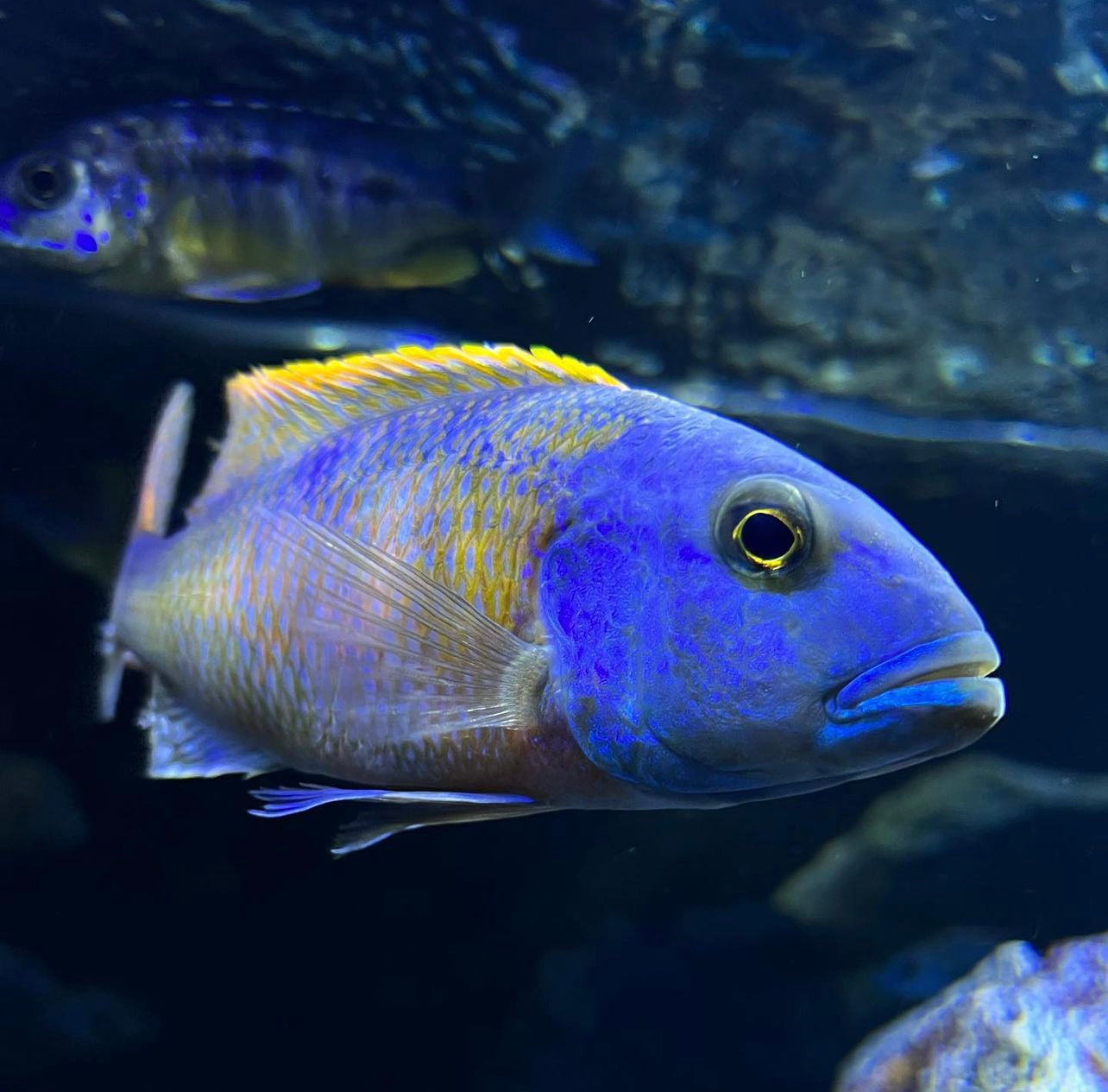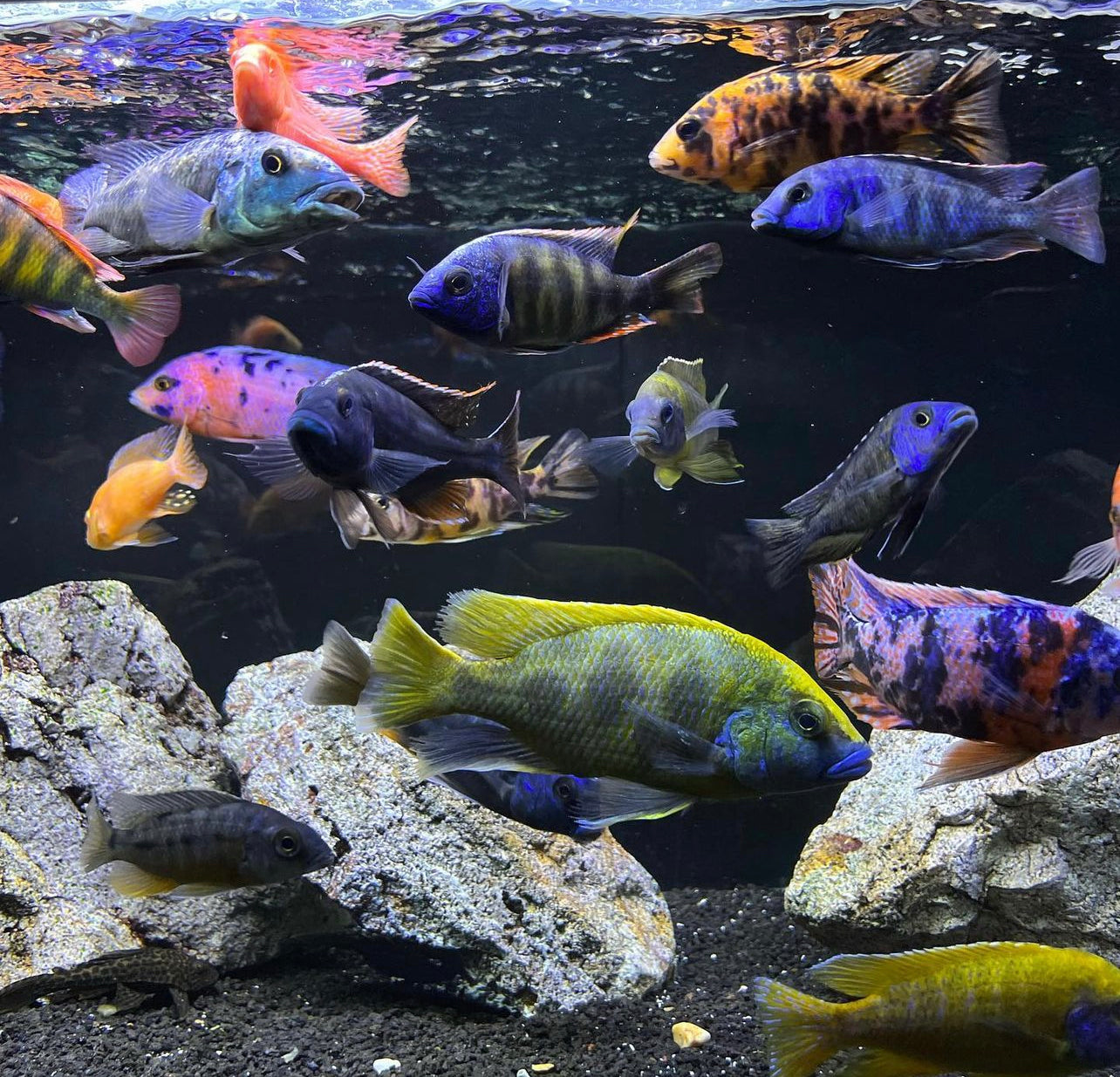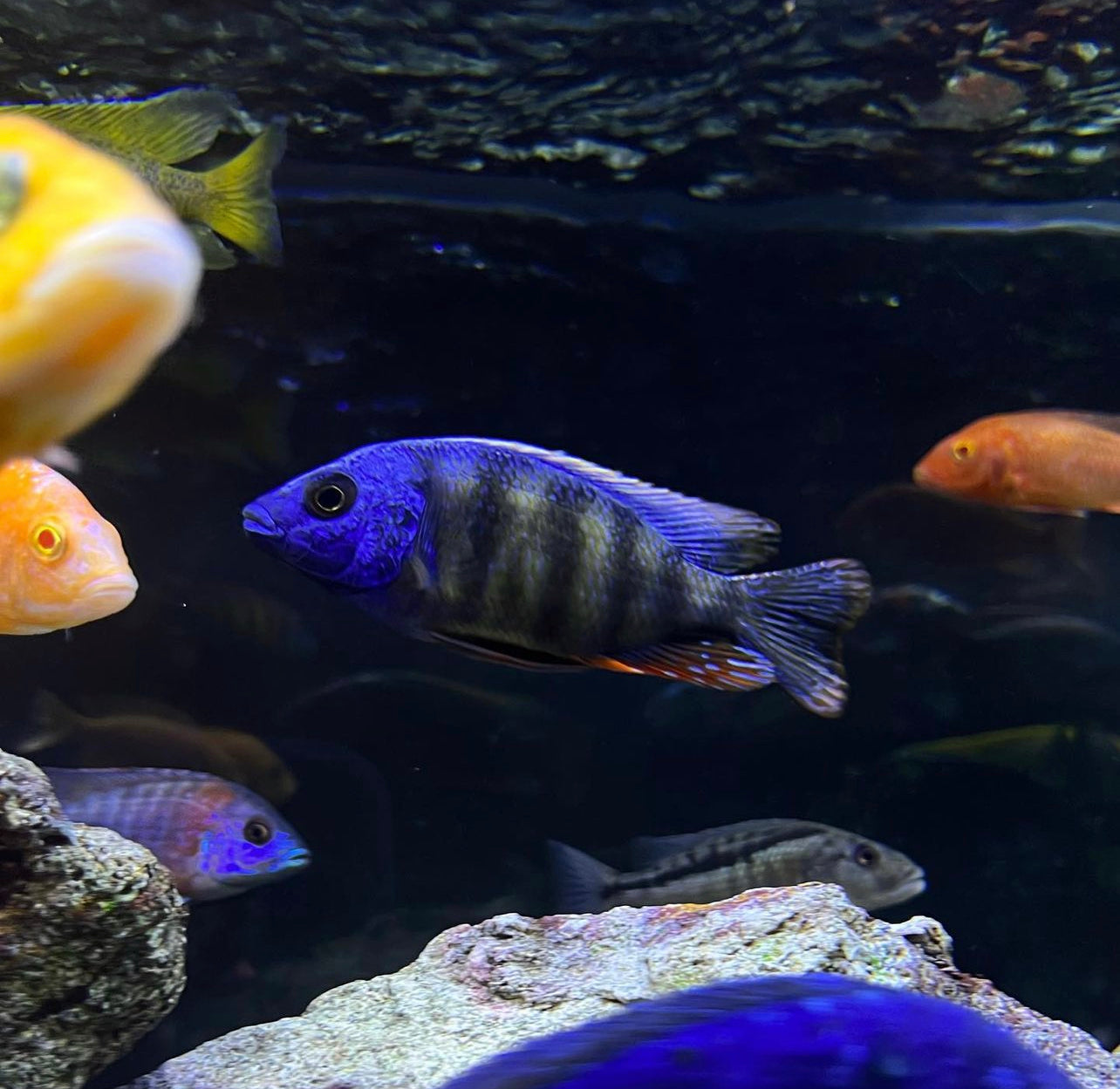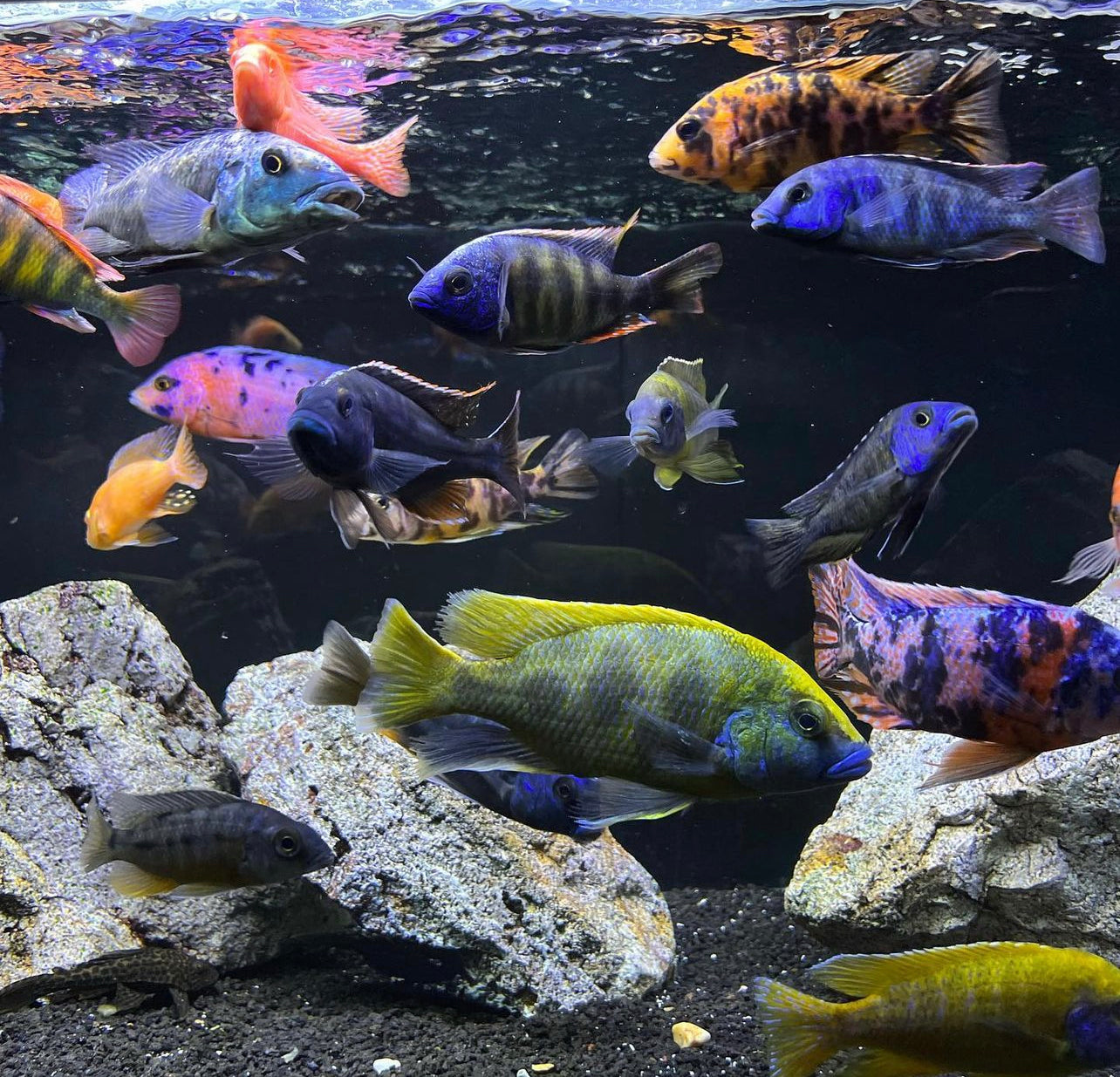
ACUAMENTE
¡Prepárate para "AcuaMente"! Sumérgete en este nuevo libro y eBook que te llevará hacia la serenidad a través del fascinante mundo de los acuarios. ¡Muy pronto! en formato impreso y digital!

Buccochromis Rhoadesii
This is a piscivorous species found on softer substrates, such as muddy or sandy areas, as well as off beaches.
It is a species of haplochrome cichlid. It is endemic to Lake Malawi.
Youtube

African Cichlids
African Cichlids come mostly from lakes Malawi, Tanganyika, Victoria and Edward.

The Ideal Aquarium
Aquariums for Cichlidae should be spacious ..
Try to recreate its habitat with rocks and suitable substrate or gravel.
African Cichlids
General information
Behavior
African cichlids exhibit territorial behaviors such as chasing and nibbling, especially when housed in a full tank. African cichlids are active and require a lot of space to swim, as well as many caves and hiding places to claim their territories.
Diet
In the wild, African cichlids eat a primarily carnivorous diet, although the fish are opportunistic feeders. They eat anything they find, including plant matter, insects, and small fish.
Some species of African cichlids are insectivorous and live on a diet primarily of insects. Some African cichlid species, such as mbuna cichlids, are herbivorous. Read about the specific African cichlid you intend to purchase and adapt your diet to suit the fish's diet.
Ideal Conditions
Water type: Moderately hard, tropical freshwater
Tank size: Minimum 30 gallons, plus 5 gallons per extra fish
Water temperature: 75–85°F
Substrate: Fine, soft sand
Tank configuration: plants, rocks, caves, hollow decorations
Acidity: 7.8–8.6 pH
Water hardness: 12–30 dGH
Filter: Yes, to keep the tank clean and reduce nitrates
Pump: Yes, it is recommended to maintain a stable current and generate oxygen when breaking surface
Lighting: Yes, standard aquarium lighting can be used to encourage plant growth and highlight the beautiful colors of your fish.
Water heater: Yes, to maintain a warm tropical water temperature
Differences between Mbuna Haps and Aulonocara
There are 3 main types of tropical cichlid fish from Lake Malawi in the African Rift Valley; Mbuna, Aulonocara and Haplochromis. It is often thought that keeping Malawi cichlids means that you can throw any Lake Malawi cichlid fish into a fish tank and that's it. Technically it's a little more complicated than that and due to feeding habits and even though they all live together in a huge lake (360 miles long and 25 miles wide) you should try to separate them in the home aquarium unless it's really big!
It may be fine to keep them together, however you need to be very careful with the foods you use and they would be more susceptible to contracting Malawi cichlid bloat disease which can be tragic.
It is quite common to keep the Aulonocara (Peacock) cichlid together with Haps (Haplochromis) as they both have the same diet and tend to swim more in open water, although rock work is still essential in the aquarium. The third type is Mbuna and although they are mainly vegetarians, they get their nutrition from grazing on rocks, feeding them some of the essential elements that peacocks and haplochromes require can cause problems.
Aulonocara Cichlid (Peacock)
Often known as the peacock cichlid, the Aulonocara is essentially a fish that has many color variants depending on where it comes from in the lake, although some are very similar to others. It is quite common for them to interbreed because all the females look almost identical and are only gray in color. This can result in some wonderful looking fish that are usually referred to as "OB Peacock". Technically, these are hybrids; However, if we want to start getting picky, aren't all of these fish hybrids, as they are all one fish, but have evolved into different colored formations over the years?
Haps (Haplochromis)
Haps, for lack of a better name, are basically a non-Mbuna flock that is informally called Haps because many of these fish once belonged to the broad genus Haplochromis Hilgendorf.
Most Haps are piscivores, unlike the vegetarian Mbuna. However, there are some exceptions to this generalization, but these do well in a piscovore's diet. Haps are aggressive, but not as aggressive as the vegetarian Mbuna. They have long, thin, almost torpedo-like bodies, and navigate in open water. Most of these fish are silver or gray when small, with males becoming very brightly colored as they mature. Females normally remain colorless.
Mbuna cichlids
Mbuna are a large group of rock-dwelling cichlids that live among large piles of rocks along the coast. They are usually seen in large groups, but are by no means a schooling fish. In some areas of Lake Malawi, 20 fish per square meter is not uncommon. Both sexes of the more than 100 species of Mbuna are unusually colorful, while usually only the males have color. They are very colorful with bright patterns of horizontal stripes or vertical bars. Mbuna are smaller and tend to have flat faces, which allows them to scrape algae off rocks better.



